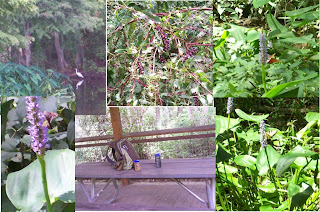Well, Baton Rouge CM rides have been fun, but I think that may have been my last one. I rode only a short way with the group, circling the lakes; dropped out to help with a flat tire before the Mass got off of Campus again. They rode to the State Capitol, and it was an even larger gathering, this time: I heard the count was about 325… LSU is back in session, now. New, inexperienced riders may have worsened some of my usual objections: too slow speed, disorderly use of the streets, taunting of motorists.
Now, I accept that Critical Mass is a protest activity, a way to raise awareness of bikes on the streets. But taking up the passing lane and militant attitudes are more than I can abide. I can accept the usefulness of “corking” intersections to allow the Mass to cross as a single unit. This was demonstrated again, I heard, by a big traffic jam: police directing traffic on a downtown street required the Mass to stop, proceeding piecemeal through that intersection, and it caused a big traffic mess way back through town where the Mass was strung out.
It’s been fun, and I think that Critical Mass has served as a useful public- awareness campaign. However, it seems that CM has outlived its usefulness in that regard. The city of Baton Rouge and LSU are making great efforts to accommodate cyclists, and it’s time to tone it down and show our appreciation by making the best use of the facilities and public acceptance which have been provided to the bike community. I have been unsuccessful at promoting rides of the “Critical Manners” type, where traffic laws are strictly observed and smaller, more orderly groups would convey better public images.
Now, I accept that Critical Mass is a protest activity, a way to raise awareness of bikes on the streets. But taking up the passing lane and militant attitudes are more than I can abide. I can accept the usefulness of “corking” intersections to allow the Mass to cross as a single unit. This was demonstrated again, I heard, by a big traffic jam: police directing traffic on a downtown street required the Mass to stop, proceeding piecemeal through that intersection, and it caused a big traffic mess way back through town where the Mass was strung out.
It’s been fun, and I think that Critical Mass has served as a useful public- awareness campaign. However, it seems that CM has outlived its usefulness in that regard. The city of Baton Rouge and LSU are making great efforts to accommodate cyclists, and it’s time to tone it down and show our appreciation by making the best use of the facilities and public acceptance which have been provided to the bike community. I have been unsuccessful at promoting rides of the “Critical Manners” type, where traffic laws are strictly observed and smaller, more orderly groups would convey better public images.
